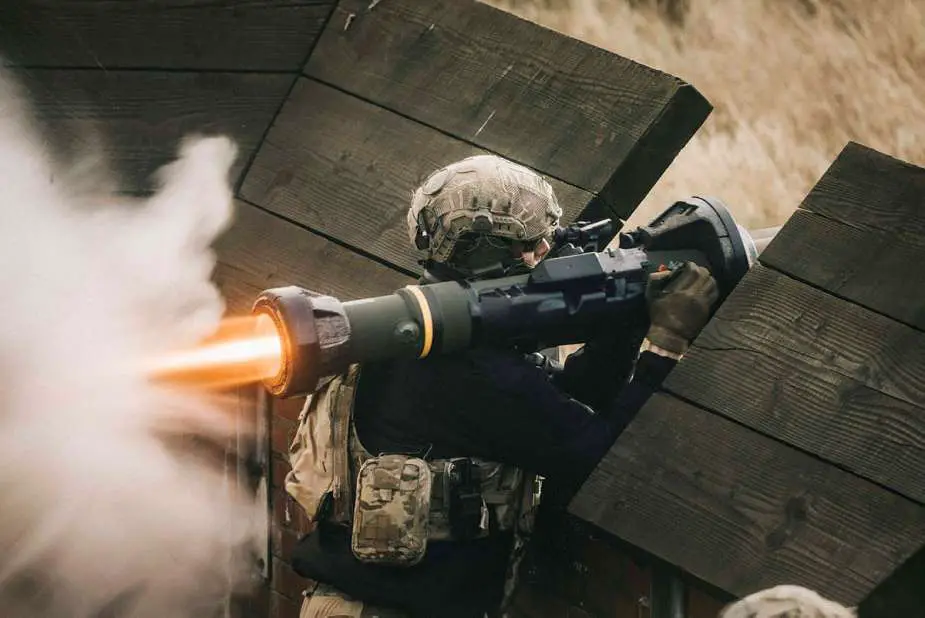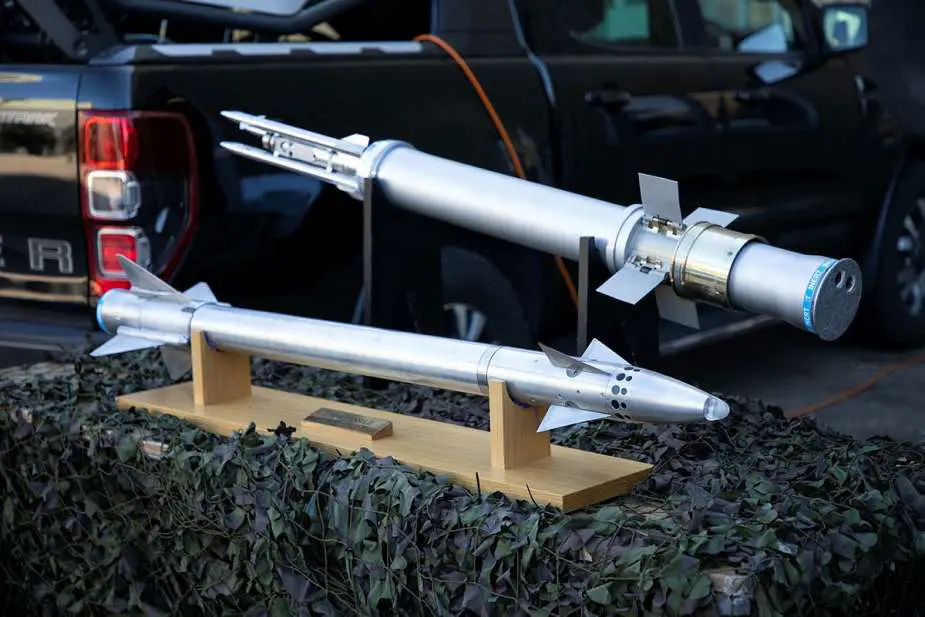Breaking news
Thales UK to double production of Martlet, NLAW and Starstreak missiles.
According to Challenges on March 22, 2024, the Thales Belfast facility, employing approximately 600 workers, is set to significantly increase the production of several missile types. These include the Lightweight Multirole Missile (LMM), also known in the British Army as the Martlet; the Starstreak surface-to-air missile; and the NLAW (Next Generation Light Anti-tank Weapon), designed by the Swedish company SAAB but manufactured solely at the Thales location.
Follow Army Recognition on Google News at this link

The NLAW system includes a fire-and-forget missile capable of ranges between 20 to 600 meters, with an effective range for moving targets up to 400 meters. (Picture source: British MoD)
Alex Cresswell, the CEO of Thales UK, has confirmed the plan to double the plant's output, projecting an annual production rate amounting to several thousand missiles. This expansion responds to the urgent demands prompted by the conflict in Ukraine and the need to replenish British military inventories. The increase in production will include not only the modern NLAW and LMM/Martlet missile systems but also the Starstreak missile, which has seen a resurgence in demand and strategic relevance recently. According to data from the Swedish think tank SIPRI, the UK's support to Ukraine has been substantial, with deliveries comprising 6,900 NLAWs, 1,800 Starstreaks, and 300 LMM Martlets throughout 2022 and 2023.
The NLAW (Next Generation Light Anti-tank Weapon), also referred to as MBT LAW or RB-57, is a man-portable anti-tank missile system developed by the Swedish company SAAB to meet the operational requirements of the British and Swedish armed forces. Initiated in 1999 and entering production in 2008, the NLAW is designed to enable individual soldiers to counteract modern tanks across various combat scenarios and terrains. The system has been adopted by the armed forces of several countries and has been supplied to Ukraine among other nations for military support. It features a disposable launcher and a missile capable of engaging armored vehicles, with a production order announced by the British Ministry of Defence in December 2022 for assembly in Northern Ireland.
The NLAW system includes a fire-and-forget missile capable of ranges between 20 to 600 meters, with an effective range for moving targets up to 400 meters. The launcher is equipped with an optical sight offering 2.5 times magnification and is designed for single-operator use. The system enables two primary modes of operation: the Overfly Top Attack (OTA) for armored targets and the Direct Attack (DA) for softer targets like vehicles or structures. The OTA mode allows the missile to detonate above the target for increased effectiveness against armored vehicles, while the DA mode is suitable for direct hits on less protected targets. The Predicted Line of Sight (PLOS) guidance system requires the operator to maintain a target lock for a brief period before launching. The NLAW is noted for its ability to be used within confined spaces, thanks to its fire-and-forget technology and the design of its missile, which ensures safety for the operator and surrounding personnel.
The Starstreak is a surface-to-air missile developed by Thales Air Defence to engage short-range aerial targets. Capable of exceeding Mach 4, making it the fastest missile of its kind for short-range engagements, the system features a Semi-Automatic Command to Line of Sight (SACLOS) laser beam guidance system. This aims to enhance target engagement accuracy while reducing susceptibility to countermeasures. Upon launch, the missile releases three darts made of a tungsten alloy, each containing an explosive charge, to increase the likelihood of target interception.
Entering service in 1997, the Starstreak system has been utilized by multiple armed forces globally since its deployment, from the United Kingdom to Ukraine, in multiple variants, including man-portable air-defense systems (MANPADS) and vehicle-based systems such as the Stormer HVM.
Also developed by Thales Air Defence, the Martlet, also known as the Lightweight Multirole Missile (LMM), is a missile designed for air-to-surface, air-to-air, surface-to-air, and surface-to-surface roles. Based on the Starburst surface-to-air missile, the Martlet is compatible with various platforms, including helicopters, drones, and both naval and ground vehicles. Weighing approximately 13 kilograms and measuring 1.3 meters in length, the missile features a high-explosive blast fragmentation or shaped charge warhead and utilizes various guidance systems, including semi-active laser (SAL), infrared (IR), and GPS/INS for targeted engagement.
With an ability to exceed speeds of Mach 1.5, this missile, which entered service in 2021, with full operational capability expected by 2025, has an operational range of up to 8 km. Additionally, the development of the Martlet includes the introduction of variants like the FreeFall LMM (FFLMM) or Fury, a glide bomb version.

The increase in production will include not only the NLAW system, but also the Starstreak surface-to-air missile (top) and Marlet multirole missile (below). (Picture source: British MoD)























